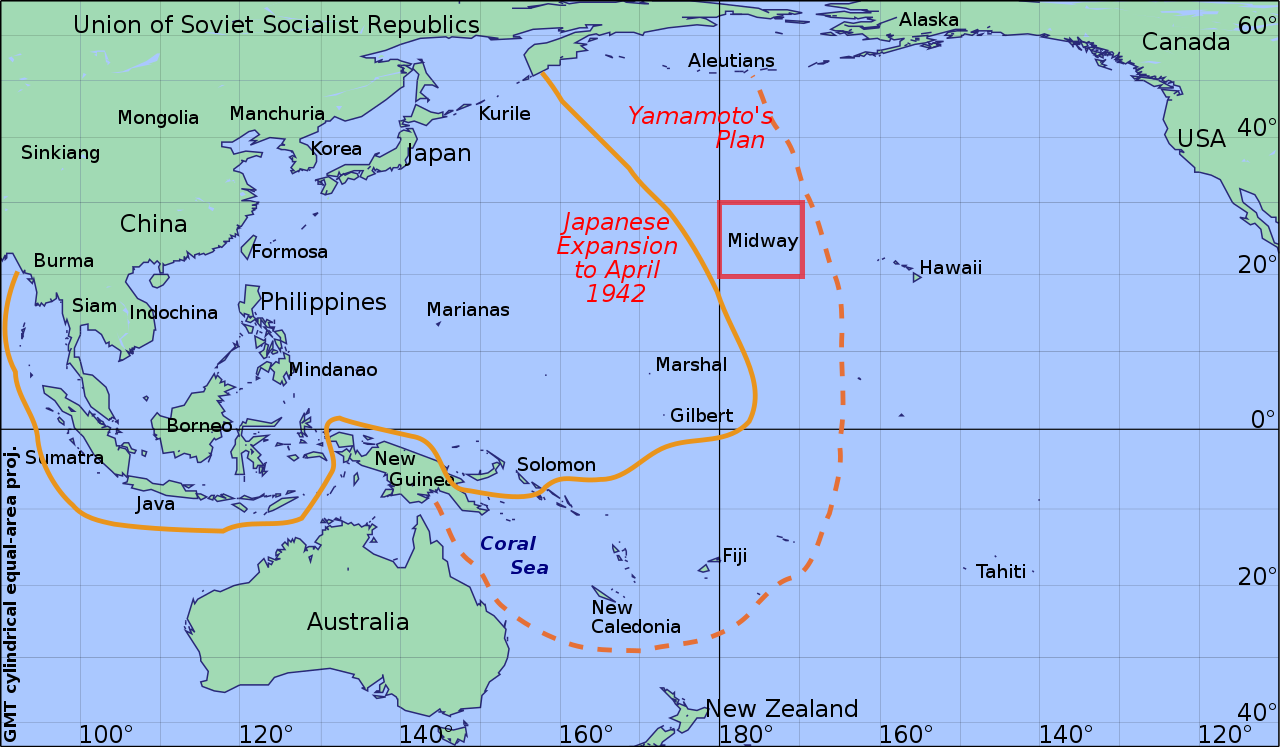Summary
Midway was the clash between the Japanese Kidou Butai(Mobile Strike Force) and the US Navy in the Pacific. At Midway, the Japanese lost four of their prized fleet carriers compared to the U.S. losing one. This carrier battle turned the tide in the Allies' favour, as up until this point the Imperial Japanese Navy had been continuously winning, but with Midway they lost the initiative, eventually leading to their defeat in 1945.
Background
Strategically speaking, Japan was much weaker than the United States from the beginning. Their industrial output was a fifth of the U.S.'s and their fleet had been constricted by the Washington Naval Treaty to 3⁄5ths that of each the U.S. and Great Britain until the late 1930's when they decline to sign the Second London Naval Treaty. They knew that they would have to win quickly in order to avoid a drawn out war which the U.S. would certainly win, and they planned to do this by knocking the US Navy out of action, forcing a surrender. They would gain various territories and much needed resources such as fuel in South East Asia. To do this, they had to sink America's carriers.
Operation 'MI'
The Navy Staff, headed by Yamamato who engineered the Pearl Harbour attack, decided on a plan to bait the last two carriers into a battle. These were the Enterprise and Hornet. They would send a large fleet including 4 carriers of their own, to bombard the Midway Islands. They would then go into a battle and sink the USNs last 2 carriers.
Operation 'AL'
This was an operation to take the Aleutian Islands, near Alaska. This was planned by Yamamoto to gain support for Midway by promising to support any potential landings of IJA forces on the West Coast of America. Supposed to be launched simultaneously with Operation MI, it started a day earlier due to the Kidou Butai sailing a day late.
Map of Japanese Expansion

Gallery

